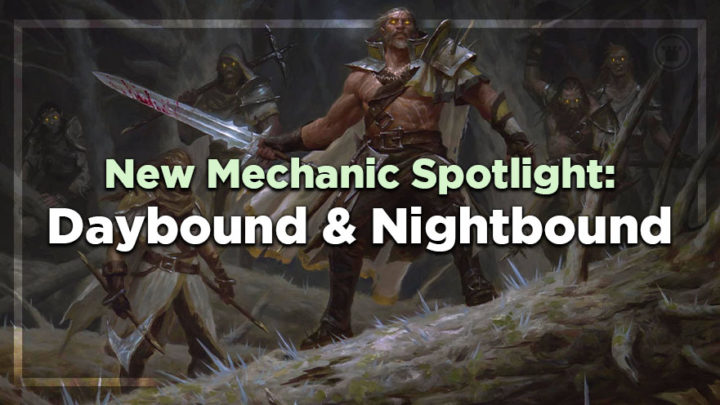We’ve reached the sunset of another spoiler season, so it’s time to introduce the mechanic which defines Innistrad: Midnight Hunt, if not the plane of Innistrad as a whole!
With a struggle breaking out in the lore over the threat of eternal night, what has previously been of concern to Werewolves alone is now heavily intertwined through all colors and archetypes in the set.
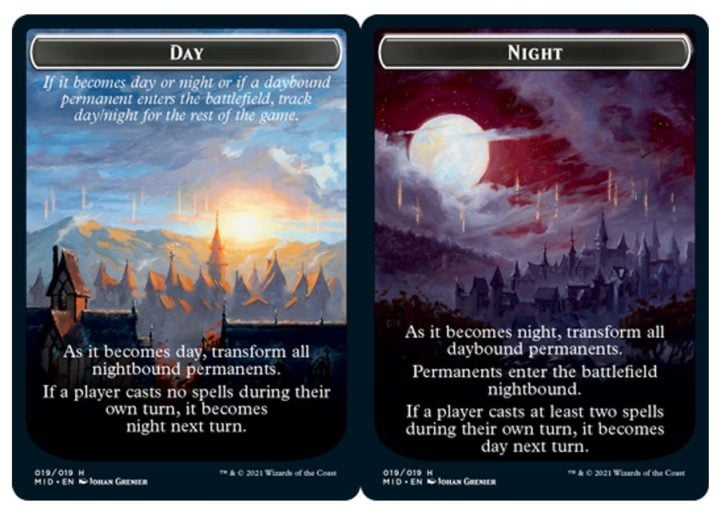
Day and night in Midnight Hunt are a fundamental part of the game. It’s constantly going on in the background, whether or not there are Werewolves or other cards in play that care about it. You can see whether it’s day or night by checking the new reminder card — there’s only one day/night cycle for everyone at the table, so every card that cares about the time of day should always stay in sync.
At the end of each player’s turn, a simple question decides whether the time of day flips over. If it was daytime during your turn, and you didn’t cast any spells during that turn, it becomes night to start the next player’s turn. If your turn was during nighttime, and you cast two or more spells during that turn, it turns back into day.
Only spells cast by the player whose turn it is are counted for this rule — one of several very important differences from older Werewolf cards without daybound/nightbound. There are also cards in Midnight Hunt which simply tell you “it becomes day” or “it becomes night” as part of their effects.
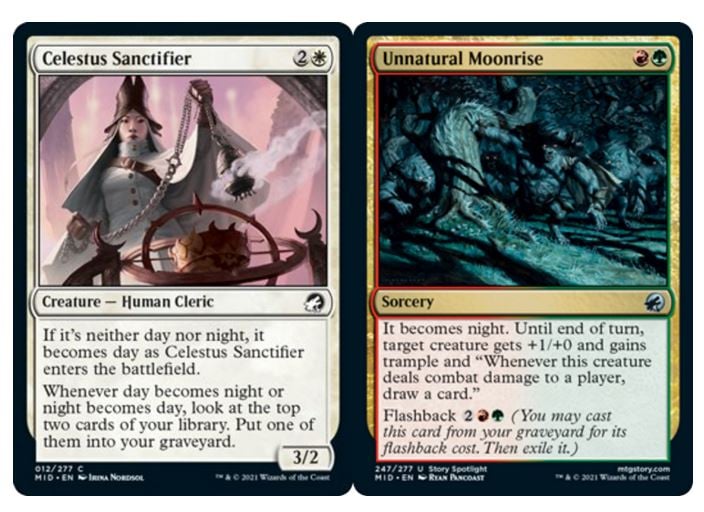
As you might guess, these cards bypass the normal rules and change the time of day in the middle of your turn. This is the only out-of-sequence way to change the time of day, and the only way that it can change more than once a turn.
DAYBOUND & NIGHTBOUND
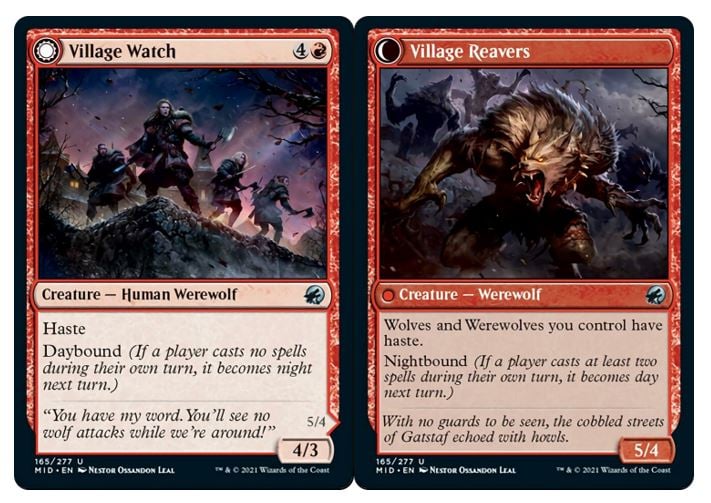
While plenty of cards in Midnight Hunt reference the new day/night cycle, the ones it’s most important to are those with the daybound/nightbound mechanic. These cards all have two sides: the front side shows their casting cost and default “daybound” state, and the back shows what they transform into once day turns to night (their “nightbound” side).
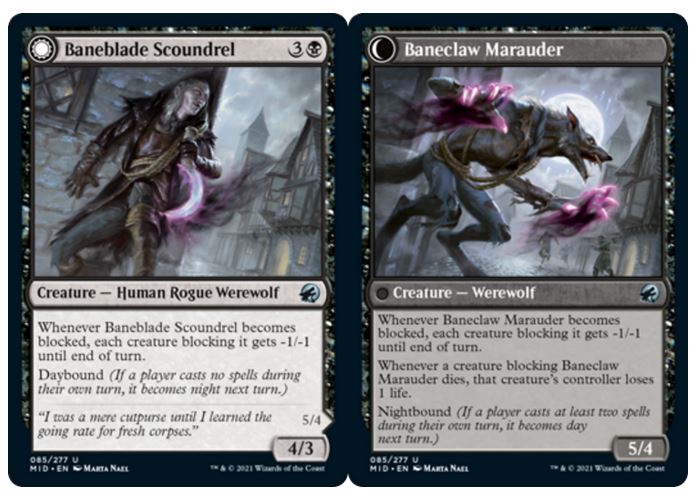
These cards transform back and forth between their two sides whenever day turns to night, or night turns to day. They will always have the right side facing up to match the current time of day, no matter what. If you cast them during night, they will transform right as they leave the stack and enter play already night-side-up. Essentially, nothing can force them out of sync with the natural cycle of sun and moon, for any reason.
This rule makes daybound/nightbound cards different to other transforming or double-faced permanents. You cannot transform them through other means, like casting Moonmist during the day. And if you exile a card that’s night-side-up and return it to play before the sun rises, it will return to play still transformed, instead of “resetting” to the front (or daybound) side.
THE CLOCK STARTS… NOW
The other important part of this rule is knowing when and how the day/night cycle begins. Like the three dungeons from Adventures in the Forgotten Realms or the monarch emblem from Commander sets, you only have to worry about day and night once there’s a card in play that references it. If that first card is a daybound permanent, it immediately becomes day for the rest of the turn and you begin checking for changes with that end step. If the first card enters play already on the nightbound side — much trickier to do — then the cycle will begin with night, to match up.
Of course, if the first card in play explicitly causes it to “become” day or night… it simply becomes day or night. Regardless of how the cycle kicks off, both players are now responsible for tracking time of day and checking for changes in their end step for the rest of the game, even on turns where no cards that care about day or night are in play.
This adds a lot of extra dimension to decks focused on daybound/nightbound cards. Even your slower turns can set up future creatures to enter play already transformed!
A LITTLE LIGHT ATMOSPHERE
I have to say, I’m a huge fan of this mechanic, and for different reasons than coven, which I discussed last week. Where I praised coven for how well it could play with cards from any Magic set or archetype, day/night is a great example of a mechanic which will set a deck or draft format apart from others in Magic.
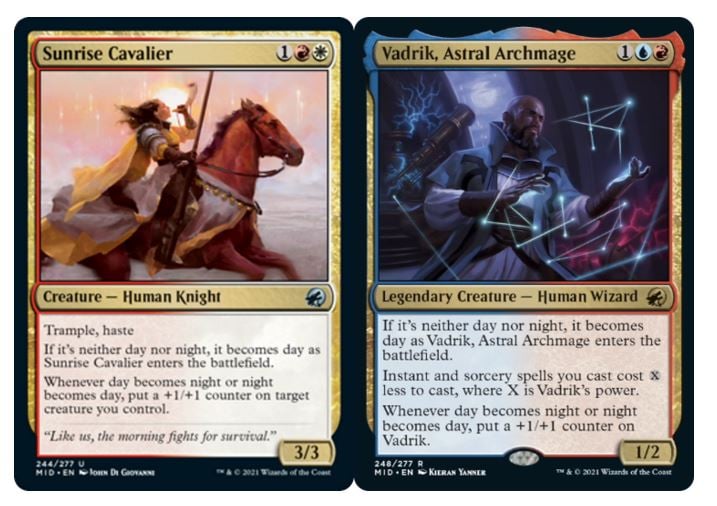
It’s totally possible to have just one daybound/nightbound creature in your Modern or Legacy deck, where the time of day may feel like a bit of extra text on that one card. But with a higher concentration of such cards — especially in Standard or Limited, where both players are likely to care about the mechanic — you now have an engaging tug-of-war going on alongside the natural flow of play. Daybound/nightbound encourages you to plan across multiple turns, and it might even affect when and how you cast your spells. I’ve said more than once that Magic could use more reasons for players to hold back on playing all their cards as soon as possible, and the need to manipulate day and night is absolutely that!

Yes, it’s a bit of extra complication, and I think this mechanic could prove even more mentally taxing than recent standouts like dungeons or mutate. It’s a completely external extra rule that both players can interact with; you have to pay close attention, even if your own cards technically don’t care about it.
But by making day and night a key mechanic for the whole of Midnight Hunt (not just Werewolves), WotC has prevented players from having to manage day/night AND another equally complicated thing. This is simply the day/night set, and like dungeons before it, I’m sure the moment-to-moment calculations around this mechanic will soon become second nature.
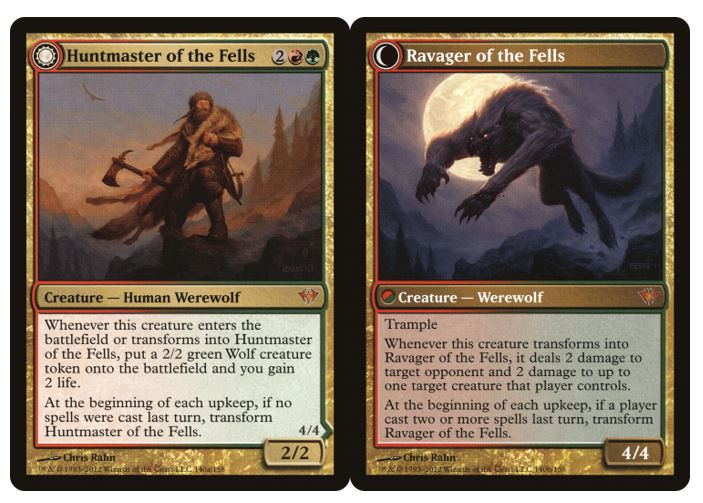
The only real complaint I can see players lodging against this mechanic is that they differ from past Werewolf designs. The differences in the rules mean that synergy between old and new cards isn’t perfect, and we’re unlikely to have cards like Mayor of Avabruck errata’d to sync up with the new day/night cycle.

But I also don’t think much of a problem. The new rules mean night will be much more common and easier to achieve in spite of your opponents — especially in multiplayer. While cards like Moonmist or the new Unnatural Moonrise won’t reliably affect your whole board anymore, others like Immerwolf (which prevents transformation instead of causing it) should still work. And WotC did go out of their way to ensure that Tovolar, Dire Overlord works equally well with both versions of the rule, so Werewolf fans can finally have their long-awaited tribal commander.

Tom’s fate was sealed in 7th grade when his friend lent him a pile of commons to play Magic. He quickly picked up Boros and Orzhov decks in Ravnica block and has remained a staunch white magician ever since. A fan of all Constructed formats, he enjoys studying the history of the tournament meta. He specializes in midrange decks, especially Death & Taxes and Martyr Proc. One day, he swears he will win an MCQ with Evershrike. Ask him how at @AWanderingBard, or watch him stream Magic at twitch.tv/TheWanderingBard.

